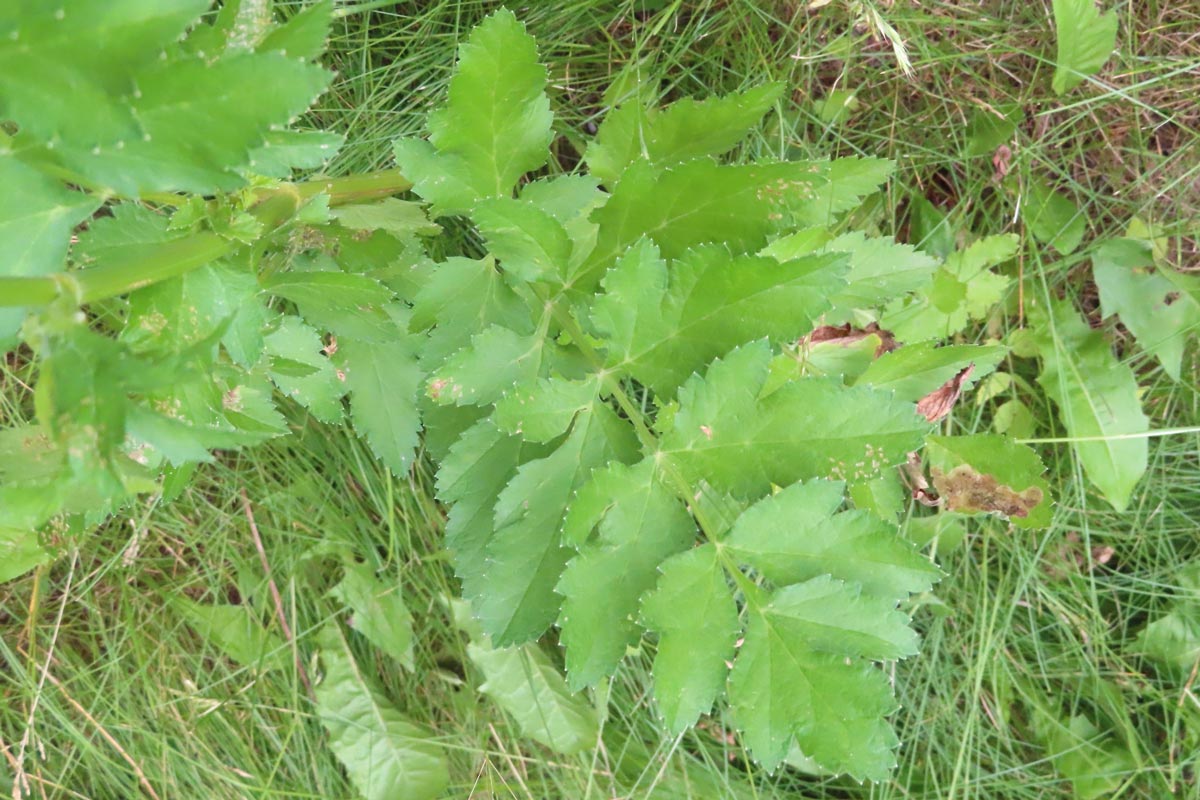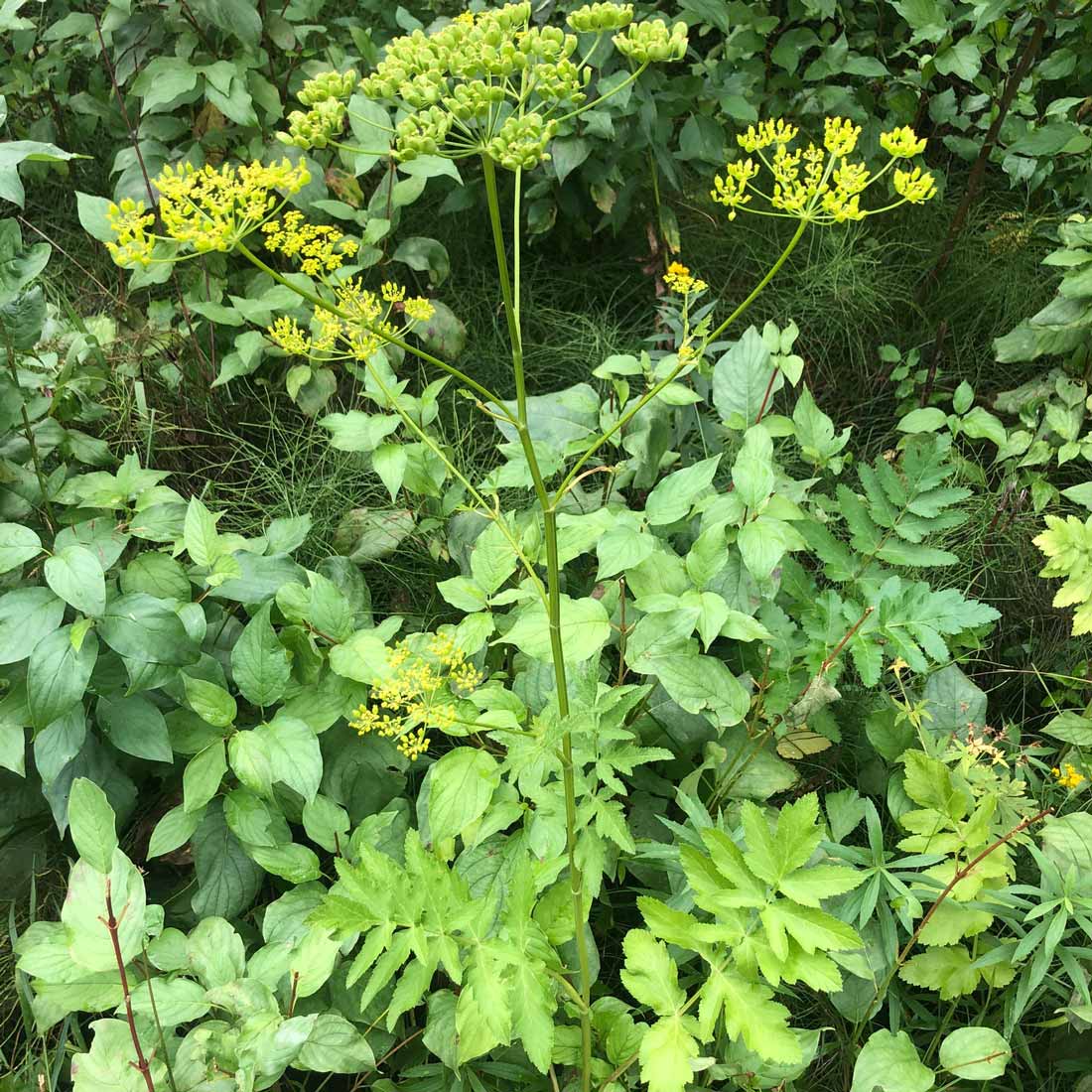Weeds That Hurt Us
Weeds can be more than cosmetic nuisances that tarnish the look of a tended landscape. Some of them can be harmful and even deadly when ingested. Find out which weeds you should be avoiding contact with.
How can a plant that’s an old-time vegetable-garden root crop also be one of the eastern United States’ most threatening weeds?
The parsnip is a plant with just such a dual identity.
British settlers brought this carrot-family Eurasian native to America in colonial times, where it was a dinner-table regular before the potato came along. But parsnip seeds spread into the wild, where the cultivated version reverted into a wild form whose stems and leaves developed an ability to cause skin rashes even worse than those of poison ivy.
You might say it’s a story of a good vegetable gone bad.
While cultivated parsnips are still grown for their sweet and crunchy taproots, the wild form has become a widespread summer weed throughout the Northeast and mid-Atlantic states.
A bigger threat than the invasive aspect is when the sap from broken wild parsnip leaves or stems comes into contact with human skin.
The plant’s above-ground parts contain natural chemicals known as furanocoumarins that interfere with skin’s ability to shield UV radiation. Within 24 hours after contact with the sap from parsnip stems or leaves, that sap plus sunlight exposure can lead to painful rashes and blistering that can rival a second-degree burn. The severity of the rash depends on the extent of the exposure. In mild case, the skin reddens and feels sunburned. In more severe cases, after the initial burn, blisters develop which can be painful for days. The affected skin also becomes discolored. The full effect of the rash typically peaks 48 to 72 hours after exposure, but skin discoloration can last for years.
Like poison ivy, this is a plant you don’t want to pull or touch with bare hands. If you are exposed to the sap of wild parsnip, wash the contaminated areas thoroughly as soon as possible.

Wild parsnips young plant. Inaturalist
Wild parsnip (Pastinaca sativa) are most recognized by their flat-topped, umbrella-like, yellow flower clusters that bloom atop three- to five-foot-tall plants from late spring through summer. Plants don’t all bloom at the same time, which accounts for that fairly long bloom window.
Wild parsnips are biennials. They sprout from seed in spring (sometimes the fall before) and grow a carrot-like taproot in the first season along with a short rosette of celery-like green leaves.
In the second season, plants grow much taller and push out those plentiful yellow flower clusters. The flowers produce mature seeds by mid-summer. Those drop over the following weeks to set the stage for future seedlings.
Second-year wild parsnip plants have fern-like, sharply toothed leaves similar to two other troublesome tall weeds – the equally skin-blistering giant hogweed, and poison hemlock (toxic if ingested). Those both have white flowers, however.
Wild parsnips usually grow in dry, open sites, such as unmaintained fields and meadows. They’re particularly fond of limestone soil.

Wild parsnip's yellow flower clusters help to distinguish it from related look-alikes including Queen Anne's lace and native cow parsnip. iNaturalist
One saving grace in battling this weed is that wild parsnip plants are vulnerable to a variety of non-selective and selective herbicides. Even most of the common broadleaf weed controls used to kill lawn weeds are effective in killing wild parsnip plants, such as triclopyr, metsulfuron, and blends of 2,4-D, mecoprop, and dichlorprop, according to Ohio State Extension.
Early-fall sprays are especially effective on first-year plants, and early-spring sprays are best for second-year plants, although applications can be made anytime the foliage is green and growing.
If you’d rather dig or hoe than spray, wear protective clothing and avoid touching cut plants.
If you must remove dead plants, be aware it’s possible for sap to absorb its way through fabric. Use rubber gloves instead of cloth ones. And remember that the rash-causing chemicals can remain active even after the plant is dead.
Avoid whacking wild parsnip plants with string trimmers because that can sling sap into the air. And if you mow a patch of them, use a mulching mower or similar equipment that drops the foliage in a controlled way vs. shooting it out.
As with all biennials, the key to breaking the cycle is eliminating plants before they have a chance to produce mature seed in year two. If you take action after a plant is already dropping seeds, it’s won that year’s battle of survival.
In garden beds, the best defense is to maintain a two- to three-inch layer of mulch over the ground. That layer discourages the sprouting of wild parsnips as well as most other weeds.
Wild parsnips usually aren’t a problem in lawns because the frequent mowing never gives plants a chance to flower and seed. Second-year plants usually die even if they haven’t produced seed.
In the long run, policing the yard to prevent new wild parsnip plants from maturing will eventually control an outbreak. Since wild parsnip seeds generally live about four years, good maintenance should dry up the “seed bank” within that time frame.
To control seeds blowing in from nearby untended fields, a spot-spray of herbicide on first-year plants will keep a lid on any comebacks. Or just dig those first-year little rosettes – with rubber gloves in place, of course.